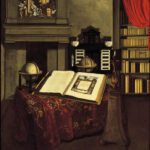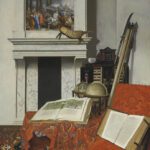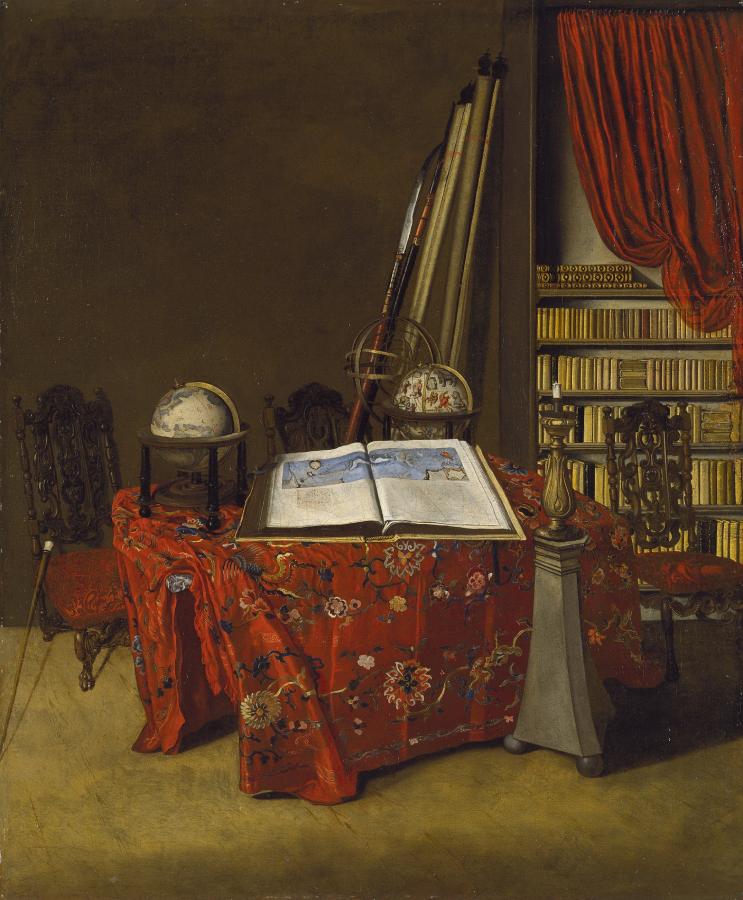Van der Heyden, Jan (1637-1712)
Corner of a Library
1711
Oil on canvas, 77 x 63.5 cm
Museo Thyssen-Bornemisza, Madrid
The present canvas had an inscription on the pedestal of the candelabrum which is partly lost and repainted, but which originally read “J v d Heyden oud 74 Jaar”, meaning “J v d Heyden of 74 years”. This information was recorded by Smith in 1834 and has allowed the canvas to be dated to 1711, one year before the artist’s death. In addition to Van der Heyden’s urban views and landscapes he also painted a small number of interiors. The first known work of this type dates from 1664 at the outset of his career as a painter. Gaskell mentioned a group of three canvases on a similar subject painted in the last years of his life: one in the Norton Simon Foundation, Pasadena, another in the Szépmüvészeti Múzeum in Budapest, and the third, considered by some experts to be a copy of the present canvas, in the Museum of the History of Religion in St. Petersburg.
The present canvas depicts an interior set against a plain wall with a bookcase to one side on which are neatly arranged volumes in perfect order. The bookcase is designed to allow easy access to the top shelves on which the largest volumes are kept, while a striking element is the curtain intended to protect them from dust and light. Leaning against the side of the bookcase are what appear to be rolled-up maps, together with an oriental lance, one of the various oriental items in the room. The foreground is used for a table covered with a splendid Chinese textile on which the artist has depicted a terrestrial and a celestial globe, an armillary sphere and an atlas. The furniture is completed by three chairs, one with a walking stick resting on it, and the candelabrum in the space nearest the viewer. Van der Heyden deployed a narrow range of colours, primarily ochre and grey-brown tones, that are enlivened by the strong areas of red used for the various textiles. The interest in minute detail evident in the treatment of the objects in all the artist’s works is to be seen here in the careful depiction of the books, the texture of the Chinese silk tablecloth with its precisely painted floral motifs, and the designs on the atlas and globes.
It has been suggested that this corner of a room may have some direct association with the painter. On the death of Van der Heyden’s wife Sara ter Hiel, whom he married in Utrecht on 26 June 1661 and who died the same year as her husband, the inventory of her possessions included a large number of books and documents. While attempts have been made to interpret this painting on various levels, Wagner simply considered it to be a depiction of a study. Gaskell concurred with this idea and drew attention to the stump of the candle, burned down after hours of work.
Mar Borobia (T-B)
Compare:
 Van der Heyden, Jan (1637-1712)
Van der Heyden, Jan (1637-1712)
Library Interior with Still Life
1711–1712
Norton Simon Museum, Pasadena
 Van der Heyden, Jan (1637-1712)
Van der Heyden, Jan (1637-1712)
Room Corner with Curiosities
1712
Museum of Fine Arts, Budapest
